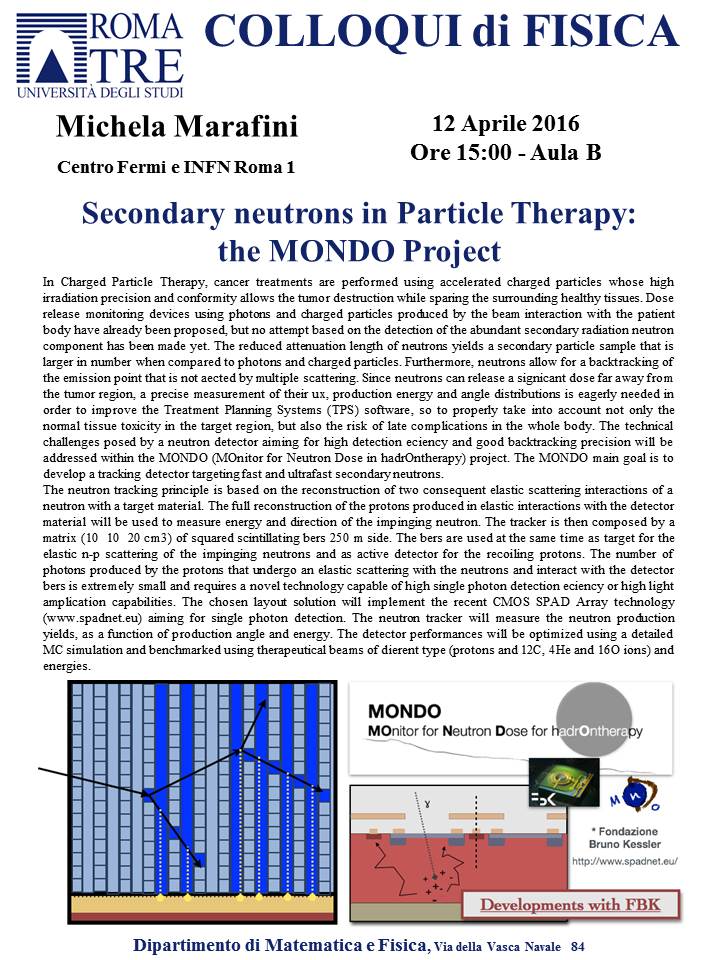
Attività del Dipartimento
Colloqui di Fisica Secondary neutrons in Particle Therapy: the MONDO Project
Michela Marafini 12-04-2016 - 15:00 AULA B - Via Della Vasca Navale 84
In Charged Particle Therapy, cancer treatments are performed using accelerated charged particles whose high irradiation precision and conformity allows the tumor destruction while sparing the surrounding healthy tissues. Dose release monitoring devices using photons and charged particles produced by the beam interaction with the patient body have already been proposed, but no attempt based on the detection of the abundant secondary radiation neutron component has been made yet. The reduced attenuation length of neutrons yields a secondary particle sample that is larger in number when compared to photons and charged particles. Furthermore, neutrons allow for a backtracking of the emission point that is not aected by multiple scattering. Since neutrons can release a signicant dose far away from the tumor region, a precise measurement of their ux, production energy and angle distributions is eagerly needed in order to improve the Treatment Planning Systems (TPS) software, so to properly take into account not only the normal tissue toxicity in the target region, but also the risk of late complications in the whole body. The technical challenges posed by a neutron detector aiming for high detection eciency and good backtracking precision will be addressed within the MONDO (MOnitor for Neutron Dose in hadrOntherapy) project. The MONDO main goal is to develop a tracking detector targeting fast and ultrafast secondary neutrons.
The neutron tracking principle is based on the reconstruction of two consequent elastic scattering interactions of a neutron with a target material. The full reconstruction of the protons produced in elastic interactions with the detector material will be used to measure energy and direction of the impinging neutron. The tracker is then composed by a matrix (10 10 20 cm3) of squared scintillating bers 250 m side. The bers are used at the same time as target for the elastic n-p scattering of the impinging neutrons and as active detector for the recoiling protons. The number of photons produced by the protons that undergo an elastic scattering with the neutrons and interact with the detector bers is extremely small and requires a novel technology capable of high single photon detection eciency or high light amplication capabilities. The chosen layout solution will implement the recent CMOS SPAD Array technology (www.spadnet.eu) aiming for single photon detection. The neutron tracker will measure the neutron production yields, as a function of production angle and energy. The detector performances will be optimized using a detailed MC simulation and benchmarked using therapeutical beams of dierent type (protons and 12C, 4He and 16O ions) and energies. org: MARI Stefano Maria Allegati: [Locandina] |



